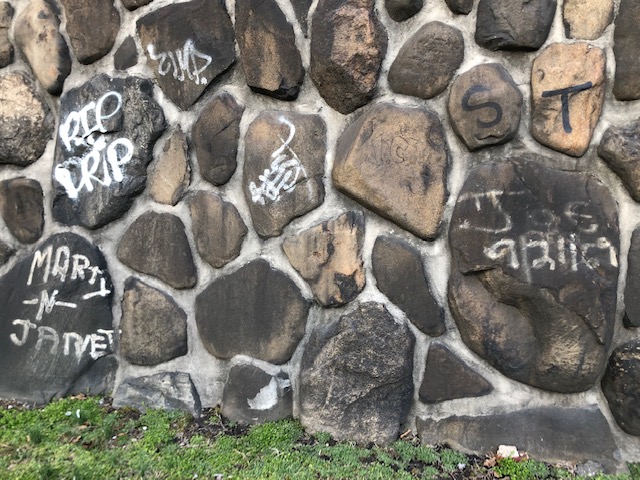Yesterday afternoon, I hopped onto Tosca, my Mercian fixed-gear bicycle, and pedaled with no particular destination in mind. I simply wanted to spend an hour or two riding before the rain came and I had to get back to work.
After zigging, zagging and looping through "Hipster Hook" and eastward to the closest thing this city has to a stetl--the Hasidic enclave in Williamsburg--I found myself riding down the unprotected bike lane on the left side of Tompkins Avenue, a one-way southbound street in the Bedford-Stuyvesant neighborhood. Although the lane is nothing more than lines painted on pavement, I'd had no issues during previous rides along its length. In fact, I rather enjoyed it because it passes a park and some of the most colorfully-decorated stores and cafes you'll see in this city.
Note my use of the past tense. It doesn't mean I'll never go back; it means only that the string of pleasurable rides was broken.
Between Madison Street and Putnam Avenue, a USPS truck parked in the lane, on the left side of Tompkins, probably to make a delivery. Those trucks often take up more than the width of a lane so, perhaps not surprisingly, there was a traffic "bottleneck." In that queue was another USPS truck, just a couple of vehicles behind me to my right. The driver seemed to lean on her horn as she shouted out the window--at me, it turned out, even though I waited behind the parked truck so she could pass.
Well, as they say, no good deed goes unpunished. She veered her truck toward me and yelled racist, "Fuckin' white tranny bitch!" (Hey, she scored a trifecta: racism, sexism and transphobia, all in one!) At the next intersection--Jefferson Avenue--she pulled over to retrieve mail from a box. I stopped and yelled, "What was that all about?"
"Mind your own fuckin' business."
"I am. When someone tries to kill me, it's my business."
"Fuck you, white tranny bitch!".
Since USPS trucks don't have license plates, I snapped this photo of the truck number. Then I took a photo of her, from the side, as she came out of the truck. Proud of herself, she posed for me.
I have filed complaints with the USPS and the local NYPD Precinct.



.jpg)
.jpg)































